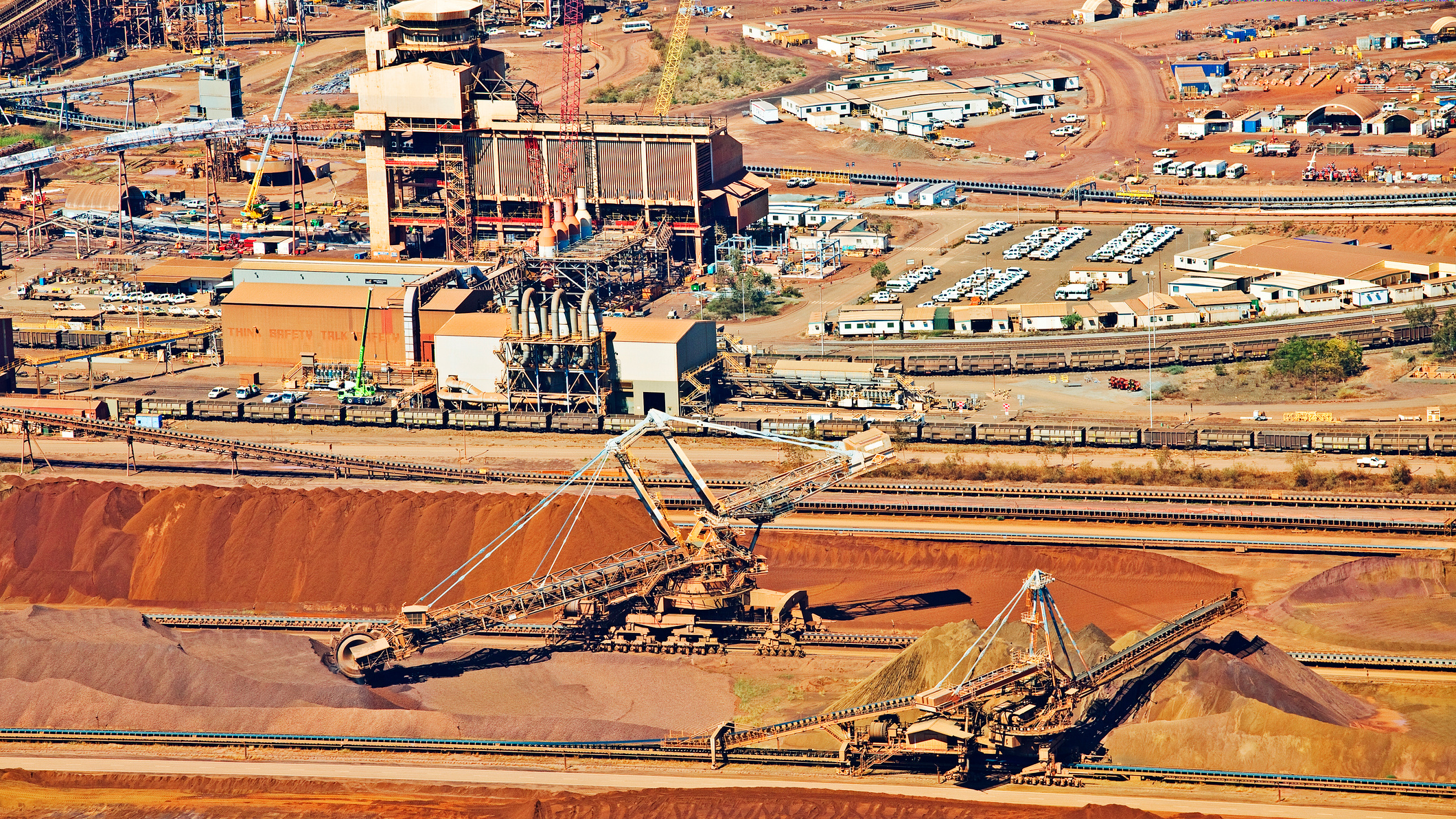Ground Breakers: BHP will drop more than $10 billion in shareholders’ pockets after a record half year

Pic: John W Banagan/Stone via Getty Images
BHP (ASX:BHP) will pay the largest interim dividend in its history, dropping $10.7 billion into the pockets of shareholders less than a month after unifying its structure to combine its Australian and British companies into a single $250 billion capped Aussie miner.
Barnstorming commodity prices across iron ore, coal, copper and nickel sent its earnings per share up 77% to US$2.10.
The US$1.50 per dividend ($US7.6b) was ~50% higher than the US$1.01 paid out in 2021, and continues the Big Australian’s rich vein of form when it comes to payouts.
CEO Mike Henry noted on a media call that BHP had delivered US$22 billion over the past 18 months despite the challenges of Covid, labour issues, rainfall at its Queensland coal mines and rising inflationary pressures.
Well over half of BHP’s US$18.5b EBITDA (up 33%), which drove a massive 77% increase in underlying half-year profit to US$10.7b, came from its iron ore operations in WA, which delivered EBITDA of US$11.2b on unit costs of US$16.15/t.
BHP’s reported profit after tax rose from US$3.876b in H1 2021 to US$9.443b in H1 2022.
Its exceptionally low cost base and scale enabled BHP to avoid the issues that befell smaller iron ore miners through the second half of the year as Chinese steel demand and output waned, pulling prices down below US$90/t.
They have since recovered to around US$150/t, signalling that despite the threat of Covid entering its WA mine sites, inflation and labour shortages, BHP is likely to remain in a position of strength into early 2022.
BHP remains on track to hit its guidance in iron ore, where it plans to produce 278-288Mt in 2022 at US$17.50-18.50/t, but last month reduced its met coal guidance due to the impact of Covid isolation requirements and wet weather on the east coast.
BHP share price today:
‘No need to do M&A’: Henry
BHP’s extremely healthy financial position was underlined by the reset in its net debt from US$12.044b in H1 2021 to US$4.12b as of December 31.
It has set BHP up for growth both from its own operations, early stage investments and potentially most transformative M&A.
Indeed, corporate activity was one of the main reasons offered by BHP’s board for its decision to combine its British and Australian entities into a single company that could easier move scrip to complete a major deal.
In recent months BHP has reportedly been beefing up its corporate team to underpin a major deal, but also dropped out of the running for Canadian nickel explorer Noront Resources after competition from Australian billionaire Andrew Forrest pushed the price too high.
BHP’s Henry urged capital discipline today, saying there was no need to overpay to grow BHP’s business.
“We’ve been clear that M&A is a lever available to us … but we’re only going to pursue the right opportunities at the right time and at the right price,” he said.
“We have said previously that any M&A opportunity has to pass the test of the capital allocation framework. (Noront) was a great example of exactly that.
“So we will be open to M&A, we’d have a stronger platform to be able to pursue growth overall and a platform if we elect to pursue M&A in place now to do so. But we’re going to be very disciplined about it.
“And we’re not feeling any kind of need to go out and do it because we know we have a number of other growth levers available to us. So it will be right opportunity at the right time and at the right price.”
China headwinds easing
BHP has also joined Rio Tinto (ASX:RIO) in taking a more optimistic stance on Chinese economic growth and commodity demand.
Concerns around Chinese stagnation and its limp property market, as well as falling steel output and iron ore prices, peppered the second half of 2021.
But iron ore prices have recovered sufficiently in 2022 for Chinese authorities to make statements as per the usual concerned that speculation is pumping prices up. That’s often a hint demand is pretty good.
BHP expects end use demand in Chinese to firm over the course of 2022, saying its starting point is “zero growth” from China’s 1.033Bt steel output level in 2021.
“As is common at the start of a new five-year plan, infrastructure is expected to be supportive of steel demand,” BHP said.
Henry told media he expects price volatility to continue, hut that China’s economic outlook was looking more positive.
“I think in terms of commodity price, volatility, do we expect that to continue for some time, including for iron ore? Yes, we do. But the broad outlook for commodity demand and pricing remains quite quite strong,” he said.
“If you look through what’s driving inflation, currently, some of it is related to supply chain disruptions that we do get we expect that (to be) kind of a temporary impact.
“But the other key driver is demand-led inflation and we see that as being more enduring. And of course, it’s going to have positive implications for quantity demand and pricing.
“If we then look specifically at China, it would be fair to say that in the past, so for the July to December half, we probably under called the degree to which the constraints would come down on things like steelmaking in China and some of the policies that were put in place that would dampen demand.
“But since then, we are starting to see some of those policies relax, we think that the headwinds are going to fall away or ease over the remainder of this calendar year.”
Henry sees policies constraining the real estate sector easing.
Time to open WA up
Meanwhile, Henry also gave his support to the movement from the business community backing the opening of WA’s borders, key to keeping its Pilbara mines operating uninterrupted over the past two years, after Premier Mark McGowan reneged on the promised February 5 open date last month.
WA has begun to see the emergence of a community Omicron outbreak after it leaked through the hard border early this year, while big miners have dealt with increasing challenges from labour shortages.
“Clearly governments are needing to make tough judgments about about these policies. But I think everybody, including the WA Government, would recognise that at some point, things have to return to normal,” Henry said.
“It’s just a question as to when that happens. We believe that, as do many others, now’s the time for borders to begin opening back up again.
“Certainly as an industry and as BHP, we have the ability to navigate the near term disruption that arises as a result of that.”
Henry said BHP and the mining industry would be able to manage Covid outbreaks, pointing to high vaccination rates, lower health impacts of Omicron compared to other variants of Covid-19 and a broad recognition things had to return to normal at some point as the main reasons to lift the proverbial wall.
Related Topics
UNLOCK INSIGHTS
Discover the untold stories of emerging ASX stocks.
Daily news and expert analysis, it's free to subscribe.
By proceeding, you confirm you understand that we handle personal information in accordance with our Privacy Policy.








